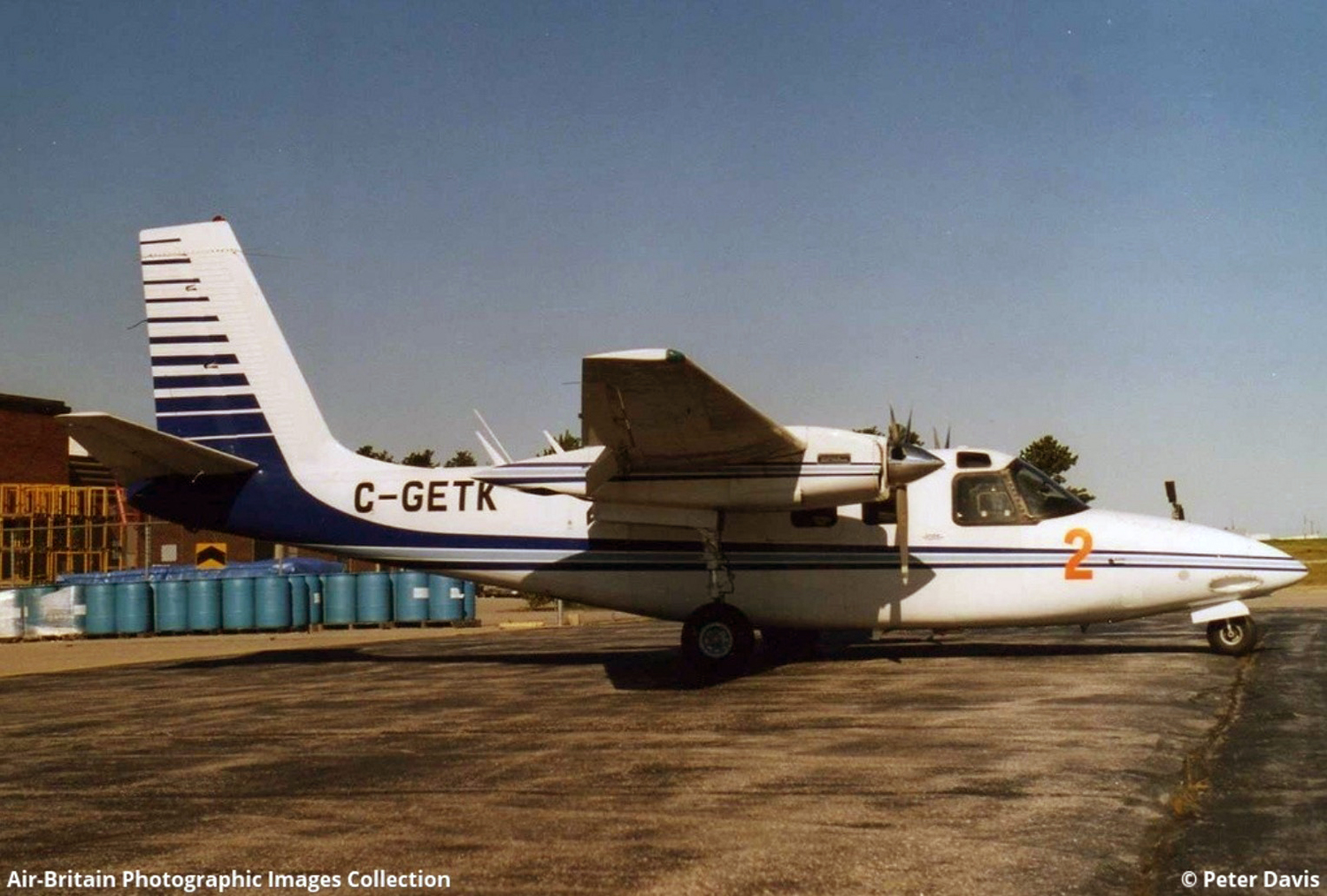Country
Crash of a Rockwell Aero Commander 500B in Broomfield
Date & Time:
Mar 1, 2013 at 1545 LT
Registration:
N93AA
Survivors:
Yes
Schedule:
Broomfield - Broomfield
MSN:
500-1296-111
YOM:
1963
Crew on board:
1
Crew fatalities:
Pax on board:
1
Pax fatalities:
Other fatalities:
Total fatalities:
0
Captain / Total hours on type:
414.00
Aircraft flight hours:
10021
Circumstances:
The pilot stated that, during the preflight inspection of the airplane, he checked the fuel gauge, and it indicated 65 gallons. Due to the design of the fuel system, it is not possible to visually check the fuel level to confirm that the fuel gauge indication is accurate. During takeoff and as he reduced power for enroute climb, the left engine began to surge and lose power. He immediately turned left back toward the airport and contacted the control tower to advise that he was making a single-engine, straight-in approach to land. When he lowered the landing gear, the right engine began to surge and lose power. Subsequently, the pilot declared an emergency, and, realizing he had insufficient engine power and altitude to return to the airport, he retracted the landing gear and made a no-flap, gear-up landing on a nearby golf course. Postaccident application of battery power to the airplane confirmed that the fuel gauge indicated 65 gallons; however, when the airplane's fuel system was drained, only about 1/2 gallon of fuel was recovered. Thus, the engines lost power due to fuel exhaustion.
Probable cause:
Loss of engine power due to fuel exhaustion. Contributing to the accident was the failure of the fuel gauge to indicate the actual amount of fuel on board the airplane and the design of the airplane's fuel system, which precluded a visual confirmation of the fuel level.
Final Report:


Crash of a Rockwell Aero Commander 500B in Bartlesville
Date & Time:
Jan 13, 2012 at 1930 LT
Registration:
N524HW
Survivors:
Yes
Schedule:
Kansas City - Cushing
MSN:
500-1533-191
YOM:
1965
Flight number:
CTL327
Crew on board:
1
Crew fatalities:
Pax on board:
0
Pax fatalities:
Other fatalities:
Total fatalities:
0
Captain / Total hours on type:
3477.00
Circumstances:
The pilot was en route on a positioning flight when the airplane’s right engine surged and experienced a partial loss of power. He adjusted the power and fuel mixture controls; however, a few seconds later, the engine surged again. The pilot noted that the fuel flow gauge was below 90 pounds, so he turned the right fuel pump on. The pilot then felt a surge on the left engine, so he performed the same actions he as did for the right engine. He believed that he had some sort of fuel starvation problem. The pilot then turned to an alternate airport, at which time both engines lost total power. The airplane impacted trees and terrain about 1.5 miles from the airport. The left side fuel tank was breached during the accident; however, there was no indication of a fuel leak, and about a gallon of fuel was recovered from the airplane during the wreckage retrieval. The company’s route coordinator reported that prior to the accident flight, the pilot checked the fuel gauge and said the airplane had 120 gallons of fuel. A review of the airplane’s flight history revealed that, following the flight immediately before the accident flight, the airplane was left with approximately 50 gallons of fuel on board; there was no record of the airplane having been refueled after that flight. Another company pilot reported the airplane fuel gauge had a unique trait in that, after the airplane’s electrical power has been turned off, the gauge will rise 40 to 60 gallons before returning to zero. When the master switch was turned to the battery position during an examination of another airplane belonging to the operator, the fuel gauge indicated approximately 100 gallons of fuel; however, when the master switch was turned to the off position, the fuel quantity on the gauge rose to 120 gallons, before dropping off scale, past empty. Additionally, the fuel cap was removed and fuel could be seen in the tank, but there was no way to visually verify the quantity of fuel in the tank.
Probable cause:
The total loss of engine power due to fuel exhaustion and the pilot’s inadequate preflight inspection, which did not correctly identify the airplane’s fuel quantity before departure.
Final Report:
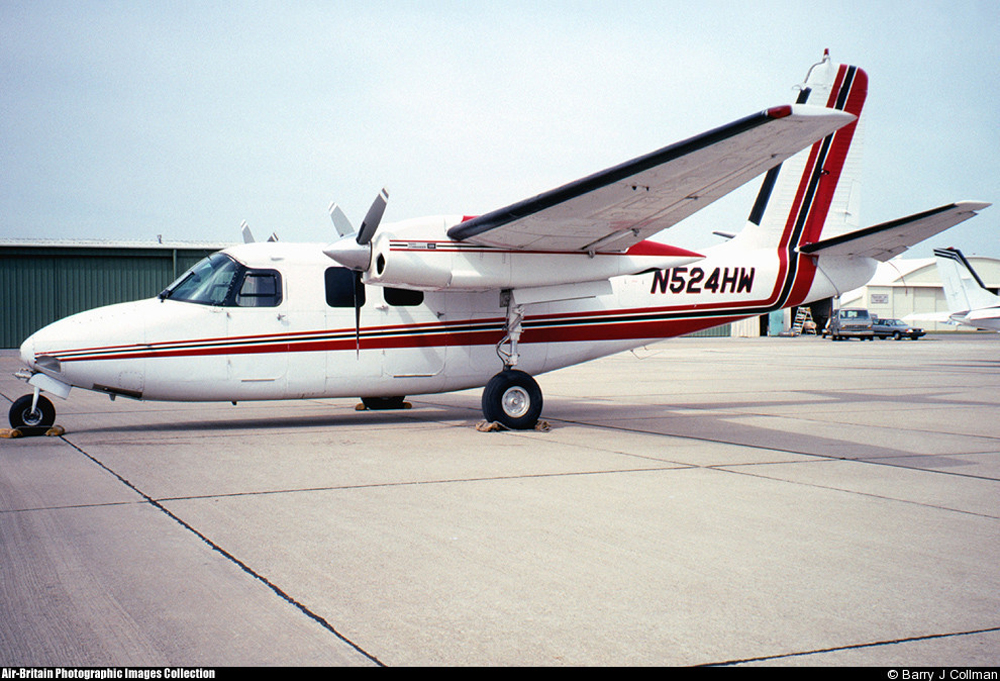
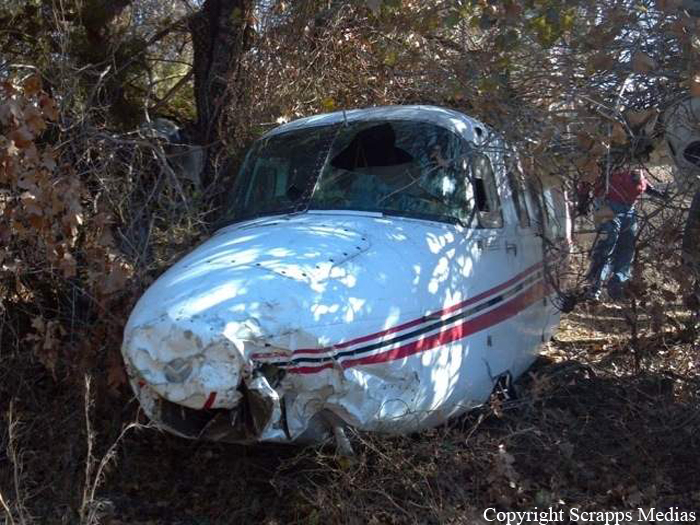
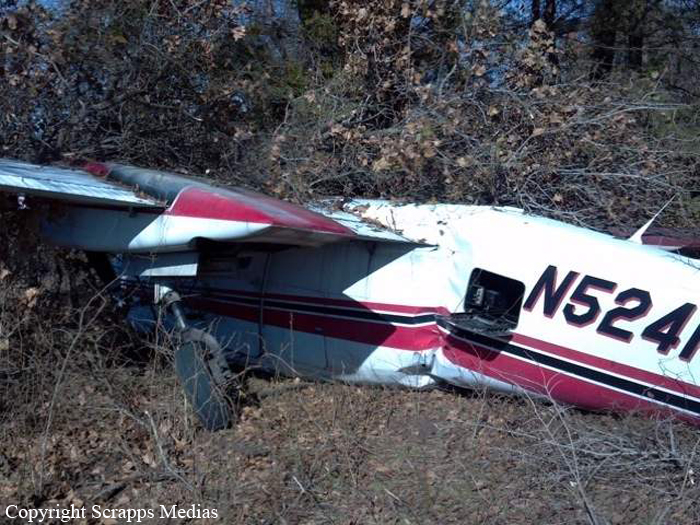
Crash of a Rockwell Aero Commander 500 in Columbus
Date & Time:
Dec 27, 2010 at 2246 LT
Registration:
N888CA
Survivors:
Yes
Schedule:
Jeffersonville – Columbus
MSN:
500B-1318-127
YOM:
1963
Crew on board:
1
Crew fatalities:
Pax on board:
0
Pax fatalities:
Other fatalities:
Total fatalities:
0
Captain / Total hours on type:
3525.00
Circumstances:
Prior to the flight, the pilot preflighted the airplane and recalled observing the fuel gauge indicating full; however, he did not visually check the fuel tanks. The airplane departed and the en route portion of the flight was uneventful. During the downwind leg of the circling approach, the engines began to surge and the pilot added full power and turned on the fuel boost pumps. While abeam the approach end of the runway on the downwind leg, the engines again started to surge and subsequently lost power. He executed a forced landing and the airplane impacted terrain short of the runway. A postaccident examination by Federal Aviation Administration inspectors revealed the fuselage was buckled in several areas, and the left wing was crushed and bent upward. The fuel tanks were intact and approximately one cup of fuel was drained from the single fuel sump. Fueling records indicated the airplane was fueled 3 days prior to the accident with 135 gallons of fuel or approximately 4 hours of operational time. Flight records indicated the airplane had flown approximately 4 hours since refueling when the engines lost power.
Probable cause:
The pilot’s improper fuel management which resulted in a loss of engine power due to fuel exhaustion.
Final Report:

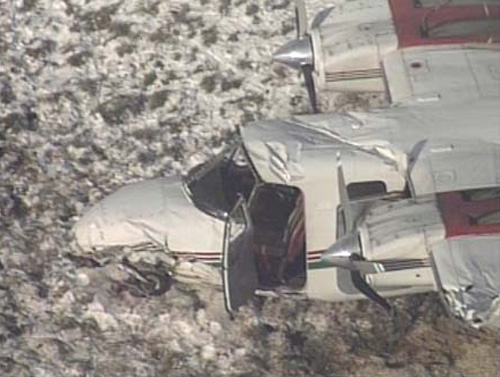

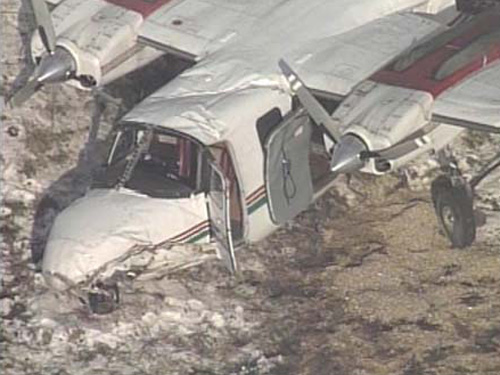
Crash of a Rockwell Aero Commander 500 in Santo Domingo
Date & Time:
Sep 23, 2010 at 1245 LT
Registration:
N100PV
Survivors:
Yes
Schedule:
San Juan - Santo Domingo
MSN:
500-784
YOM:
1959
Crew on board:
2
Crew fatalities:
Pax on board:
2
Pax fatalities:
Other fatalities:
Total fatalities:
0
Captain / Total hours on type:
100.00
Aircraft flight hours:
7810
Circumstances:
The twin engine aircraft departed San Juan-Isla Grande Airport on a private flight to Santo Domingo with two passengers and two pilots on board. On final approach to Santo Domingo-Las Américas-Dr. José Francisco Peña Gómez Airport, at an altitude of 2,000 feet and at a distance of 8 km from the airport, both engines failed simultaneously. As the crew realized he was unable to reach the airport, he attempted an emergency landing when the aircraft crashed in a dense wooded area located about one km southeast of runway 35 threshold. All four occupants escaped uninjured and the aircraft was damaged beyond repair.
Probable cause:
Double engine failure on final approach due to fuel exhaustion. It was determined that prior to takeoff from San Juan Airport, the fuel quantity in the tanks was sufficient for the flight to Santo Domingo. But the fuel cap was missing prior to takeoff and the crew applied some 'duct tape' in an attempt to replace the fuel cap. Despite the aircraft was unworthy, the crew decided to takeoff in such conditions. Because the fuel cap was missing, some fuel leaked in flight, causing both engines to stop on final approach to Santo Domingo Airport.
Final Report:
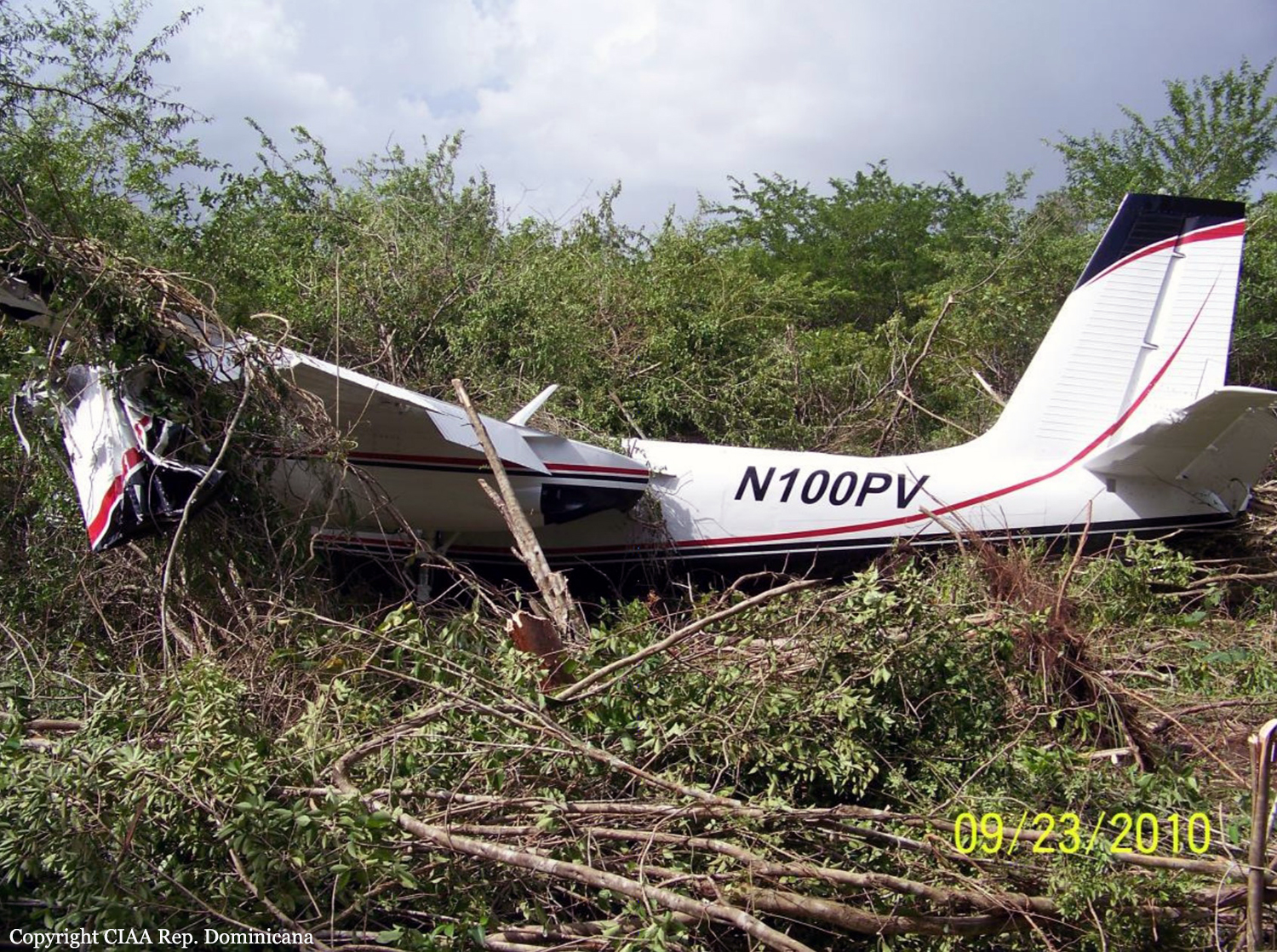
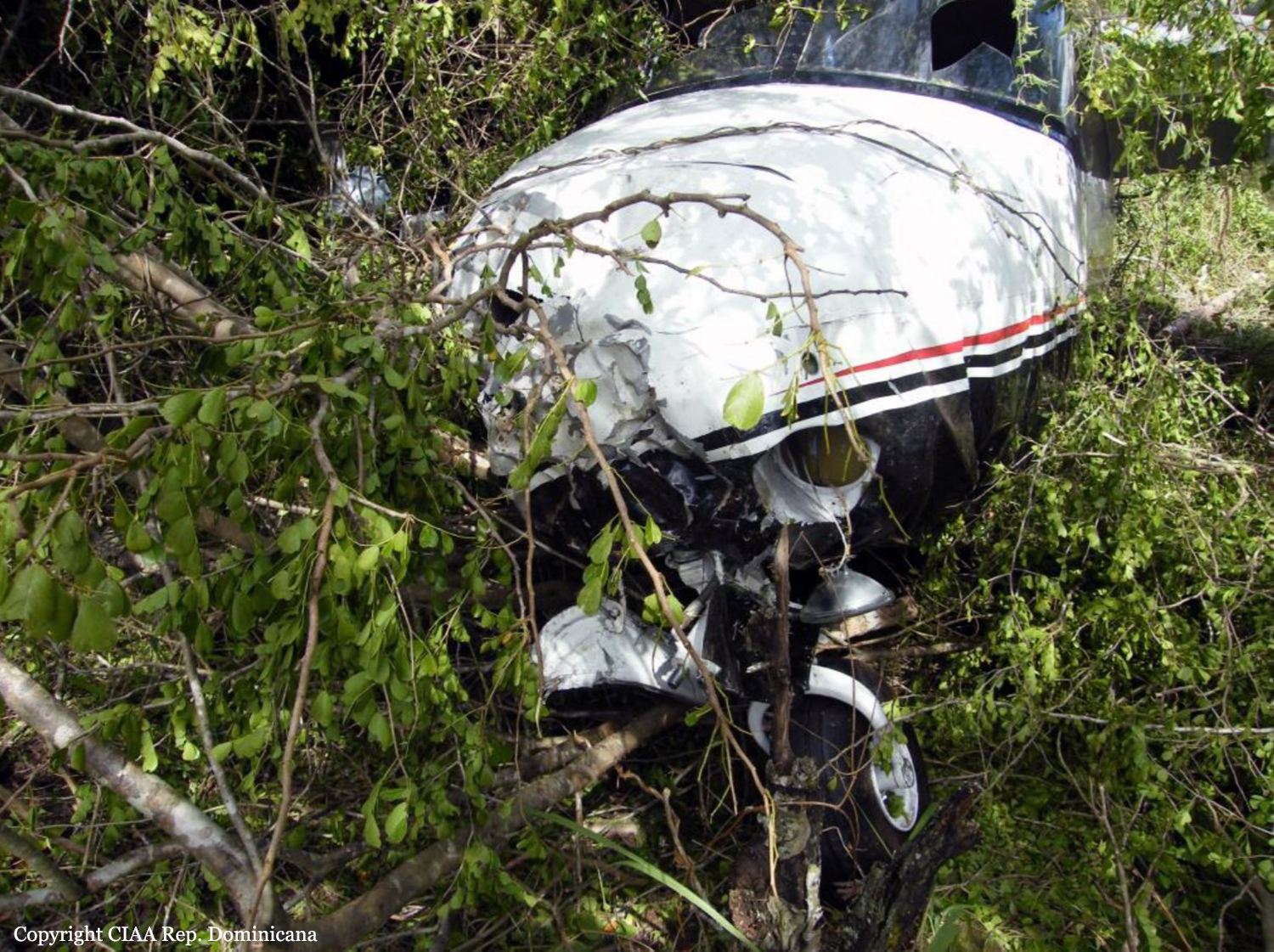
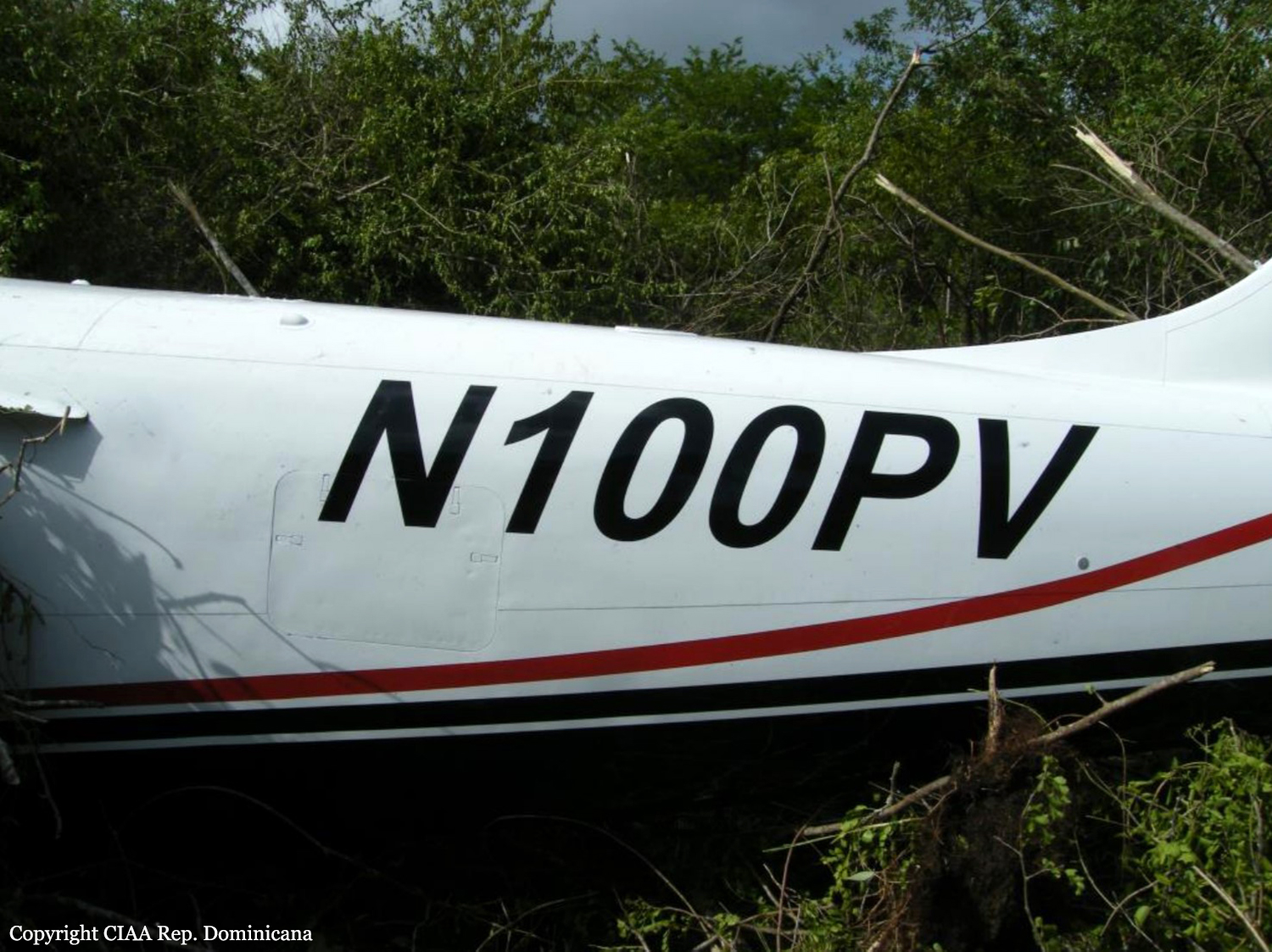


Crash of a Rockwell Aero Commander 500B on Mt Steens: 2 killed
Date & Time:
Aug 11, 2010 at 0855 LT
Registration:
N500FV
Survivors:
No
Schedule:
Redding - Butte
MSN:
500-1248-73
YOM:
1962
Crew on board:
1
Crew fatalities:
Pax on board:
1
Pax fatalities:
Other fatalities:
Total fatalities:
2
Aircraft flight hours:
5375
Circumstances:
The evening prior to the accident, the pilot acquired a computer generated text weather briefing. On the day of the accident, the pilot acquired another computer generated text weather briefing, and then contacted the Flight Service Station (FSS) for an interactive telephonic weather briefing. The information provided in all three briefings indicated that a flight on a direct route between the pilot's point of departure and his planned destination would take him through an area of forecast rain showers, thunderstorms, and cloud tops significantly higher than his intended en route altitude. Although the FSS briefer recommended an alternate route, for which he provided weather information, after departure the pilot flew directly toward his destination airport. While en route, the pilot, who was not instrument rated, encountered instrument meteorological conditions, within which there was an 80 percent probability of icing. After entering the area of instrument meteorological conditions, the airplane was seen exiting the bottom of an overcast cloud layer with a significant portion of its left wing missing. It then made a high velocity steep descent into the terrain. A postaccident inspection of the airplane's structure did not find any evidence of an anomaly that would contribute to the separation of the wing structure, and it is most likely that the wing section separated as a result of the airplane exceeding its structural limitations after the pilot lost control in the instrument meteorological conditions.
Probable cause:
The non-instrument rated pilot's improper decision to continue flight into an area of known instrument meteorological conditions and his failure to maintain control of the airplane after entering those conditions.
Final Report:
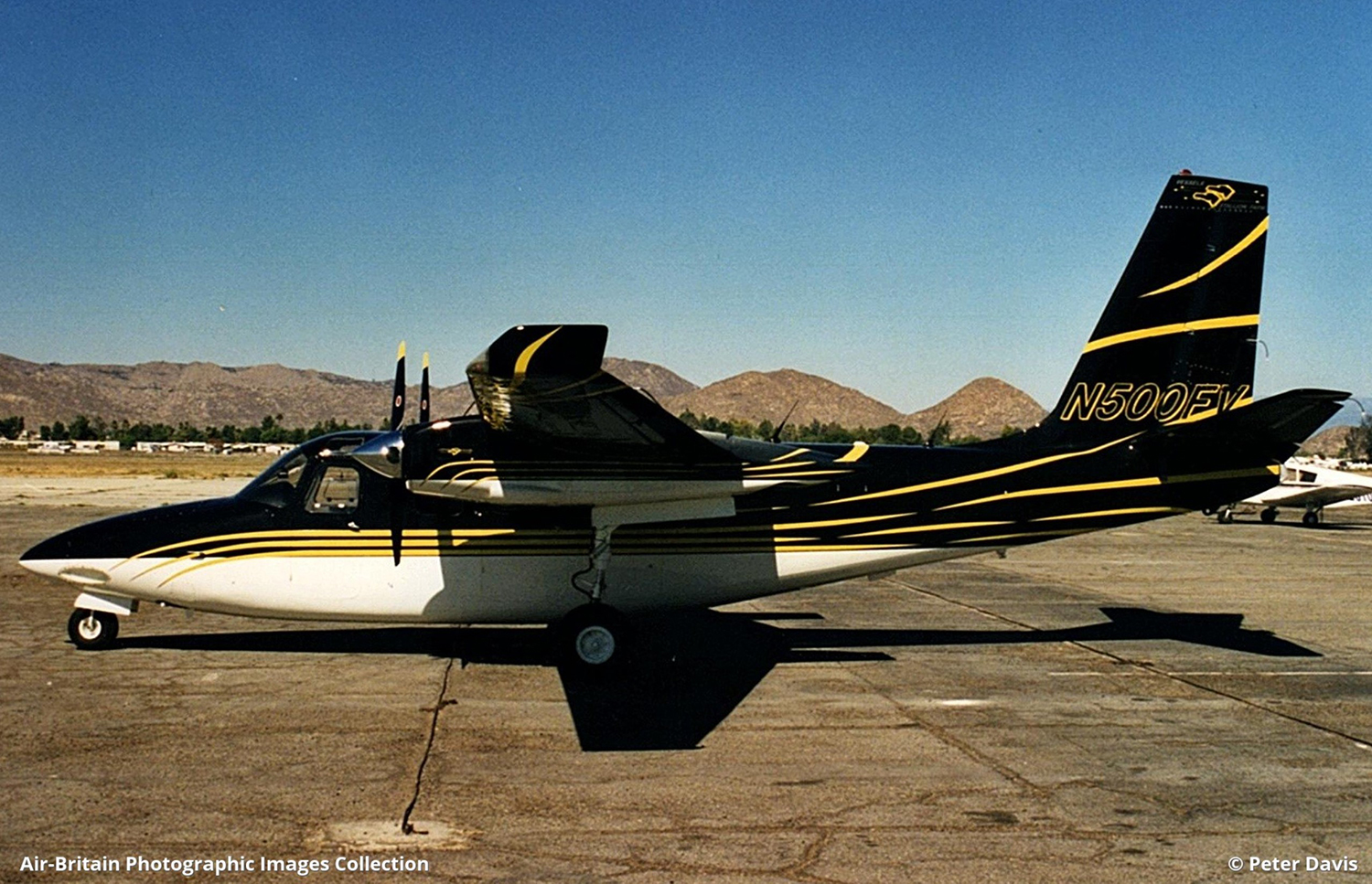
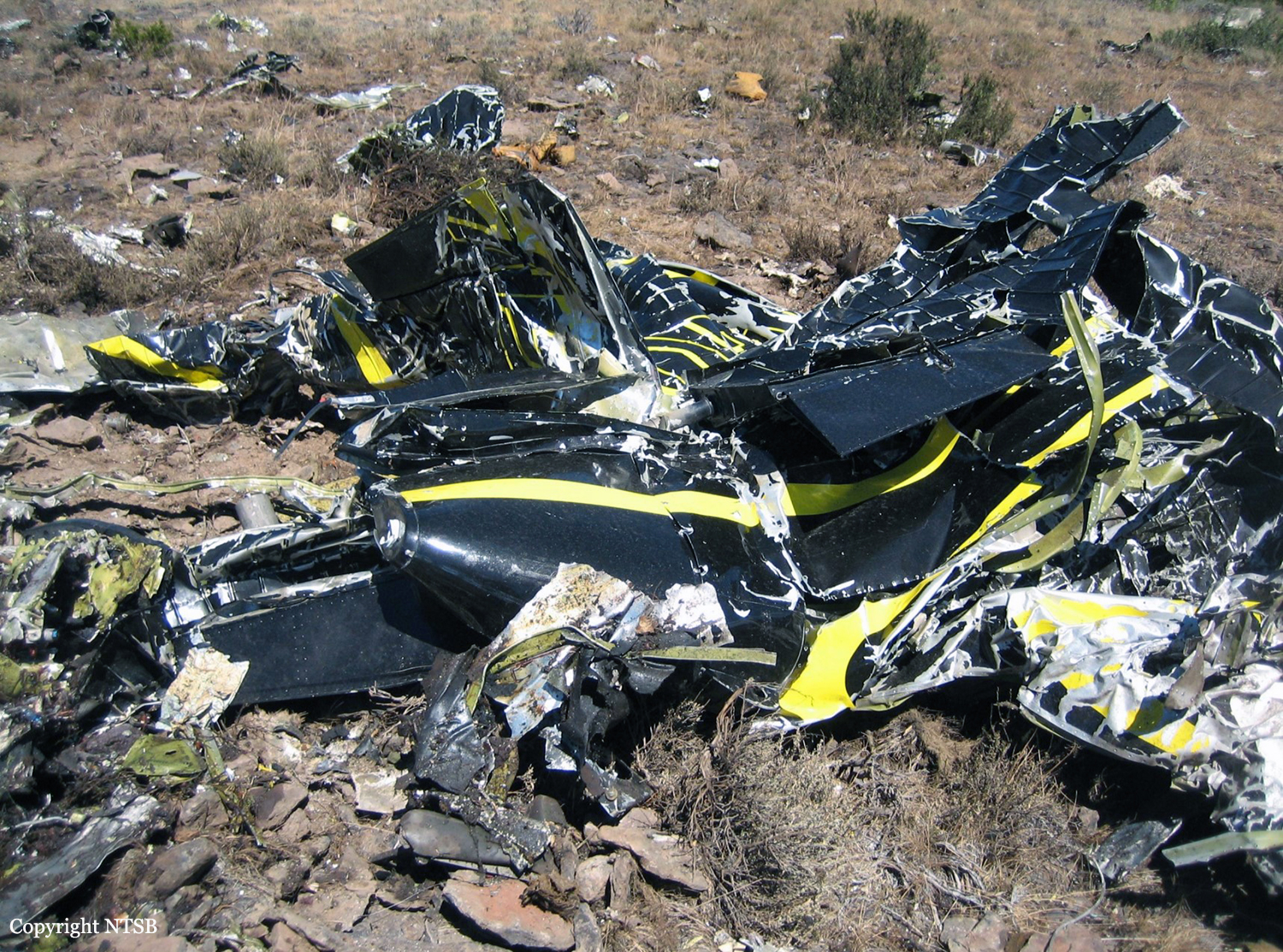



Crash of a Rockwell Aero Commander 500 in Gaborone
Date & Time:
Apr 6, 2009
Registration:
A2-ATI
Survivors:
Yes
Schedule:
Kasane – Gaborone
Crew on board:
1
Crew fatalities:
Pax on board:
4
Pax fatalities:
Other fatalities:
Total fatalities:
0
Circumstances:
Upon landing at Gaborone-Seretse Khama Airport, the twin engine aircraft went out of control, flipped over and crashed, coming to rest upside down on the runway edge. All five occupants were injured and the aircraft was destroyed. The aircraft type is not confirmed.
Crash of a Rockwell Aero Commander 500B in Tulsa: 1 killed
Date & Time:
Jan 16, 2008 at 2243 LT
Registration:
N712AT
Survivors:
No
Schedule:
Tulsa - Oklahoma City
MSN:
500-1118-68
YOM:
1961
Crew on board:
1
Crew fatalities:
Pax on board:
0
Pax fatalities:
Other fatalities:
Total fatalities:
1
Captain / Total hours on type:
695.00
Aircraft flight hours:
17888
Circumstances:
The commercial pilot departed on a night instrument flight rules flight in actual instrument meteorological in-flight conditions. Less than 2 minutes after the airplane departed the airport, the controller observed the airplane in a right turn and instructed the pilot to report his altitude. The pilot responded he thought he was at 3,500 feet and he thought he had lost the gyros. The pilot said he was trying to level out, and when the controller informed the pilot he observed the airplane on radar making a 360-degree right turn , the pilot said "roger." Three minutes and 23 seconds after departure the pilot said "yeah, I'm having some trouble right now" and there were no further radio communications from the flight. The on scene investigation disclosed that both wings and the tail section had separated from the airframe. All fractures of the wing and wing skin were typical of ductile overload with no evidence of preexisting failures such as fatigue or stress-corrosion. The deformation of the wings indicated an upward failure due to positive loading. No anomalies were noted with the gyro instruments, engine assembly or accessories
Probable cause:
The pilot's loss of control due to spatial disorientation and the pilot exceeding the design/stress limits of the aircraft. Factors contributing to the accident were the pilot's reported gyro problem, the dark night conditions , and prevailing instrument meteorological conditions.
Final Report:
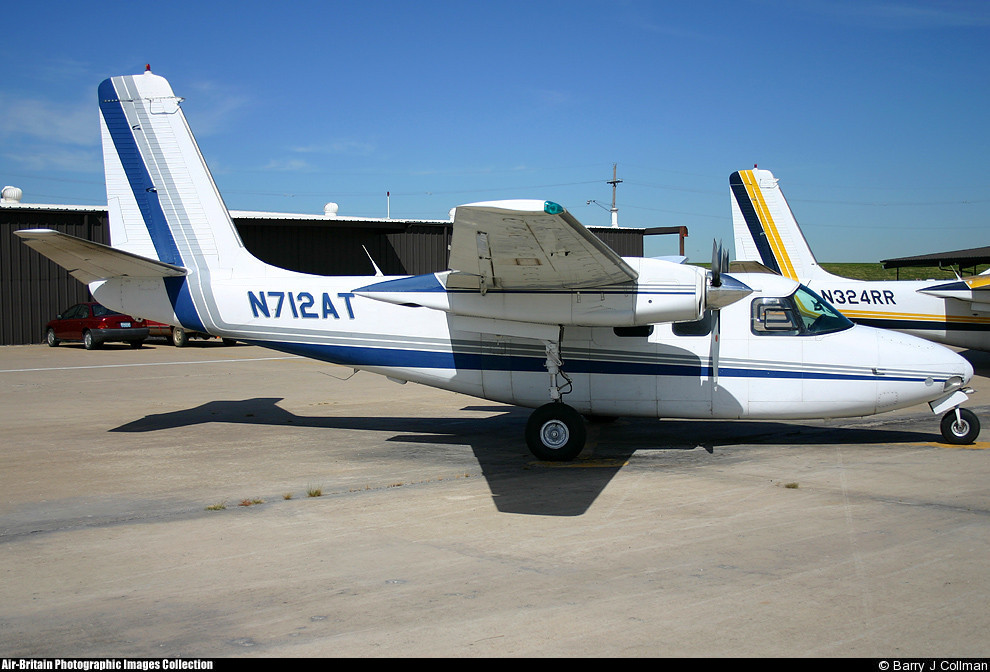


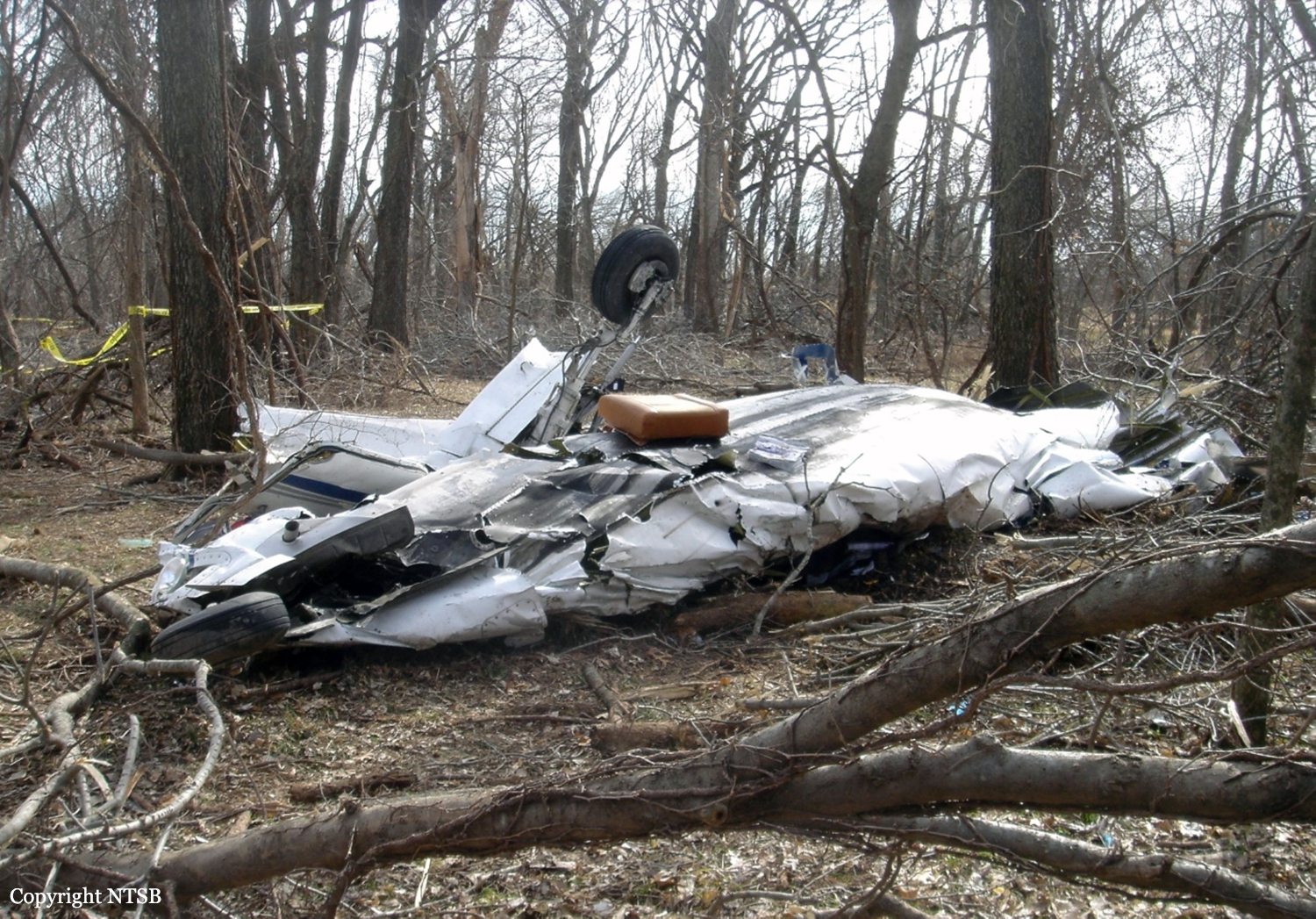
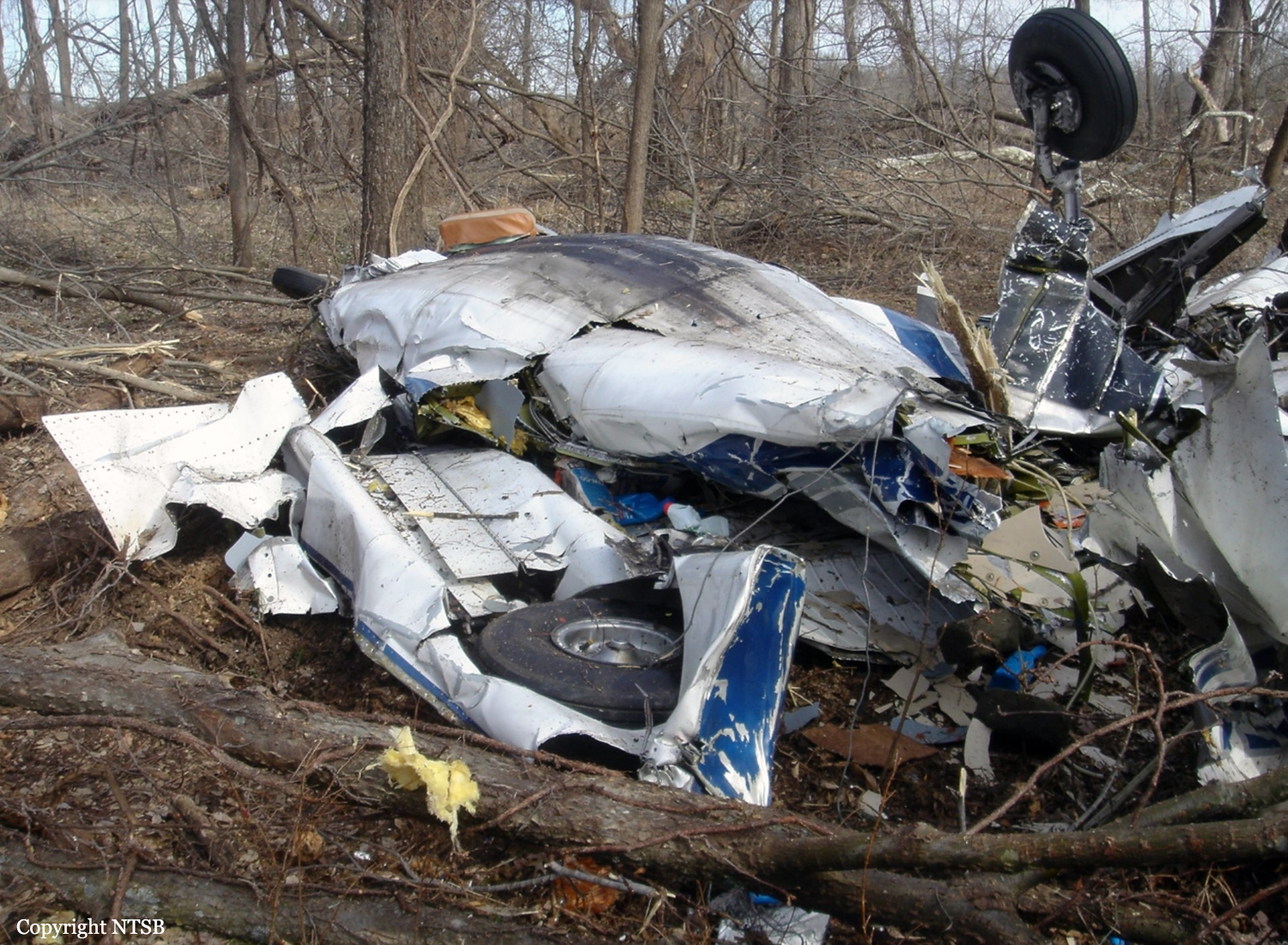

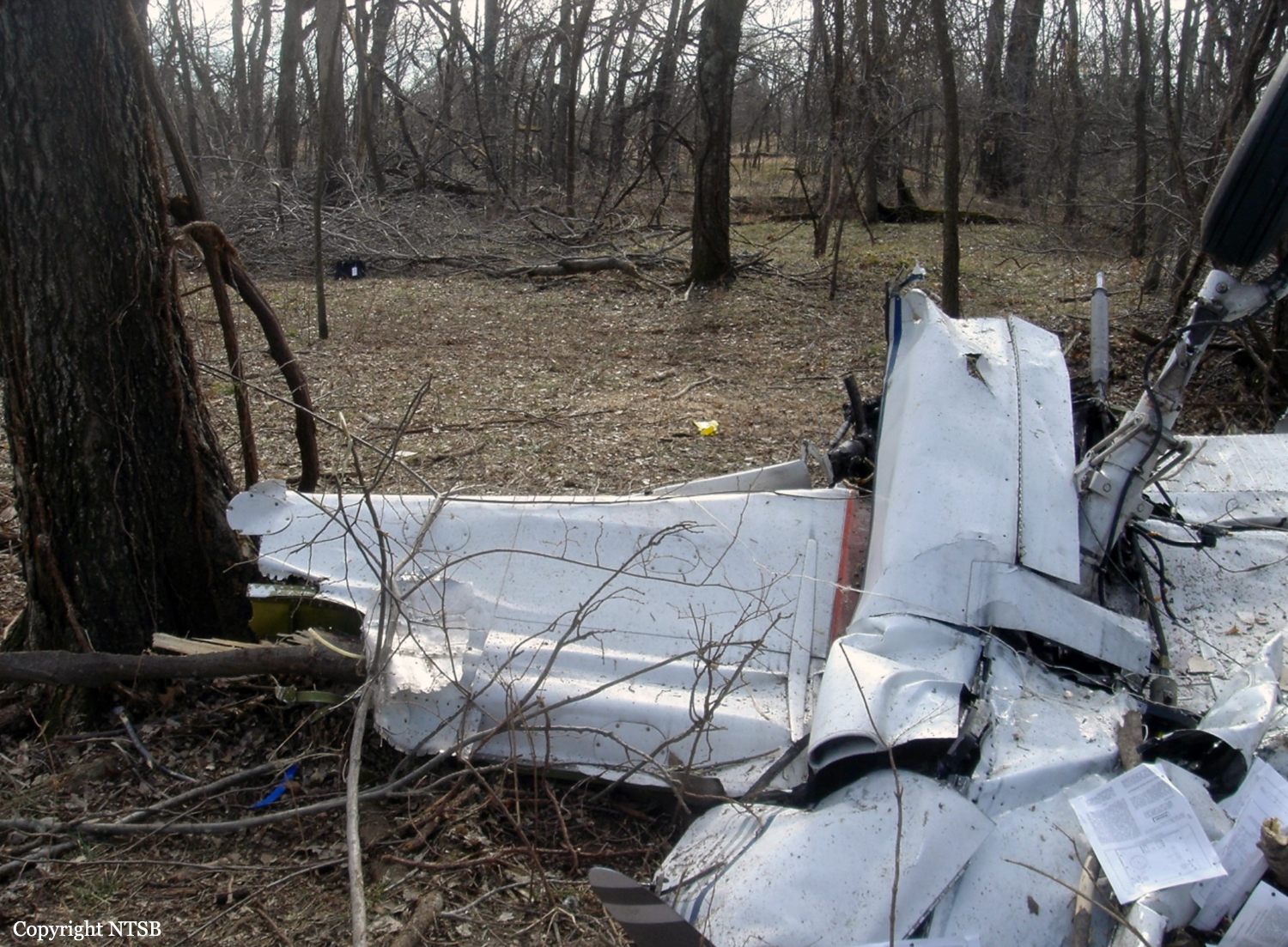

Crash of a Rockwell Aero Commander 500B near Armstrong
Date & Time:
Nov 30, 2007 at 0917 LT
Registration:
C-GETK
Survivors:
Yes
Schedule:
Dryden – Geraldton
MSN:
500-1093-56
YOM:
1961
Crew on board:
2
Crew fatalities:
Pax on board:
1
Pax fatalities:
Other fatalities:
Total fatalities:
0
Circumstances:
The aircraft departed from Dryden, Ontario, en route to Geraldton, Ontario. The flight was conducted under visual flight rules at 5500 feet above sea level with ambient temperatures aloft of -33°C. Approximately 40 minutes into the flight, the crew observed an abnormal right engine fuel flow indication. While troubleshooting the right engine, the engine rpm and fuel flow began to decrease and the crew diverted toward Armstrong, Ontario. A short time later, the left engine rpm and fuel flow began to decrease and the crew could no longer maintain level flight. At 0917 central standard time, the crew made a forced landing 20 nautical miles southwest of Armstrong, into a marshy wooded area. The captain sustained serious injuries and the co-pilot and passenger sustained minor injuries. The aircraft was substantially damaged. The crew and passenger were stabilized and transported to Thunder Bay, Ontario, for medical assistance.
Probable cause:
Findings as to Causes and Contributing Factors:
1. Suspended water in the fuel system precipitated out of solution and froze in the fuel distributor valve. This blocked the fuel supply to the fuel nozzles and led to the loss of engine power.
2. The aircraft was being operated without a fuel additive icing inhibiter. Use of such an additive would have inhibited ice formation in the aircraft’s fuel system and would likely have prevented the fuel system blockage.
Findings as to Risk:
1. The fuel distributor valve on the Aero Commander 500B is exposed directly to the cooling blast of the outside air, which under extremely cold conditions, can lead to the freezing of super-cooled water droplets present in the fuel stream.
2. The operator did not have procedures to describe how fuel additive icing inhibiter should be used during winter operations.
1. Suspended water in the fuel system precipitated out of solution and froze in the fuel distributor valve. This blocked the fuel supply to the fuel nozzles and led to the loss of engine power.
2. The aircraft was being operated without a fuel additive icing inhibiter. Use of such an additive would have inhibited ice formation in the aircraft’s fuel system and would likely have prevented the fuel system blockage.
Findings as to Risk:
1. The fuel distributor valve on the Aero Commander 500B is exposed directly to the cooling blast of the outside air, which under extremely cold conditions, can lead to the freezing of super-cooled water droplets present in the fuel stream.
2. The operator did not have procedures to describe how fuel additive icing inhibiter should be used during winter operations.
Final Report:
